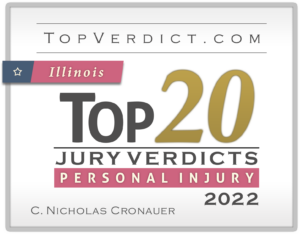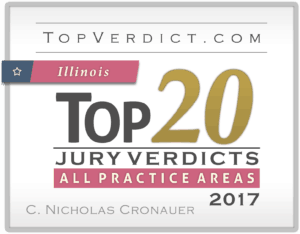

























When a defective product either causes a car crash or causes injuries that should have been avoidable, the manufacturer may be held legally responsible. Many law firms advertise for these cases, but very few truly have the experience, expertise, and resources to effectively handle them. The Illinois accident attorneys at Cronauer Law have an unparalleled track record handling cases involving defective automobiles.
No two cases are ever the same. Cronauer Law is equipped to cater to every case in terms of presentation and execution. Using our combination of cutting edge data collection technology and an impactful presentation strategy, jurors can easily understand in spite of the complexity involved in an auto defect case.
Our lawyers have won record-breaking verdicts through our world-class strategies.
The companies that design and build your cars have the responsibility to make them safe to drive, and can protect the driver and passengers when the car is a crash.
If a car fails to follow this responsibility, then the company that made the car becomes liable — the people who were injured can sue the car company for pain and suffering caused by the crash.
Even though people may have caused crash, the car manufacturers are responsible for your safety before the crash even happened.
The Crashworthiness Doctrine outlines that responsibility.
The premise underlying the crashworthiness doctrine is that some products, although not made for certain purposes—such as accidents—should nevertheless be reasonably designed to minimize the injury-producing effect of an accident. A defect is not merely the conclusion that the product failed and caused injury, but that the product failed to provide the consumer with reasonable protection under the circumstances surrounding a particular accident. The crashworthiness doctrine is consistent with the idea that although a defendant’s conduct is not a proximate cause if some intervening act supersedes the defendant’s negligence, a reasonably foreseeable intervening act, such as an accident, does not relieve the defendant of liability.
The “safer production of goods is an ‘underlying principle’ of products liability law.” Smith v. Eli Lilly & Co., 137 Ill.2d 222, (1990). Indeed, Illinois courts have long recognized a distinction between a motor vehicle crash occurring and a person’s injuries being enhanced by a defective vehicle. “[A]n auto manufacturer must foresee that its cars will sometimes be involved in accidents—and . . . provide consumers with reasonable protections under the circumstances surrounding particular accidents.” Malen v. MTD Products, Inc., 628 F.3d 296, 311 (7th Cir. 2010) (applying Illinois law); citing Buehler v. Whalen, 70 Ill.2d 51 (1977); Mack v. Ford Motor Co., 283 Ill.App.3d 52 (1996); Oakes v. General Motor Corp., 257 Ill.App.3d 10 (1994); Bean v. Volkswagenwerk Aktiengesellschaft of Wolfsburg, Germany, 109 Ill.App.3d 333(1982).
A defect is not merely the conclusion that the product failed and caused injury, but that the product failed to provide the consumer with reasonable protection under the circumstances surrounding a particular accident
In any major car crash, our team investigates every possible part of the car that should have protected you, the driver, and its occupants.
We work with experts in Traffic Engineering, Accident Reconstruction, and Car Crash Forensics to prove that a part was defective in the vehicle.
If a part was found defective, our legal team will get you the compensation you deserve for the pain, suffering, and any changes to the way you
Air bags are typically designed to deploy in frontal and near-frontal collisions, which are comparable to hitting a solid barrier at approximately 8 to 14 miles per hour (mph). — NHTSA
They are required to safely decelerate occupants before impacting the hard surfaces inside the cabin such as the steering wheel and B-pillars.
Weak, defective seatbacks collapse and fail in rear-end crashes and
cause catastrophic injuries. Commonly, seatback failures catapult – or “ramp” – front passengers to the rear, or the seat collapses onto rear passengers and causes spinal or brain injuries.
A weak or defectively designed headrest may break when loaded by an occupant in a rear-end crash.
The roof of vehicles are meant to protect its occupants in a rollover crash. The roof must not crush into the cabin up to a specific measured distance.
All cars must be designed to withstand a certain amount of force to allow a safe space to exist for the occupants in a crash.
Most trial lawyers who come across auto defect cases are not fully prepared to extract key facts to prove the case.
Cronauer Law’s in-house team of lawyers and technologists are equipped with the latest technologies, from aerial drone imaging to 3d reconstruction, to get you the best verdict possible.

Everyone is amazing. I love these people. Nicholas is a go-getter and will not stop until the goal has been achieved. He will dig deeper, go further and demand more results than any attorney I know.
Chuck Cravatta
Think you may have an Auto Defect case?
Enter as much information as you can. Skip any questions that you do not know right away or does not apply to you.